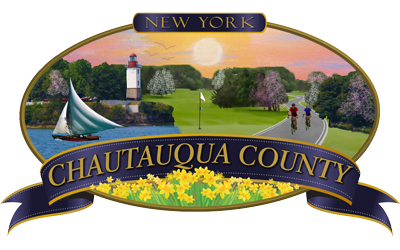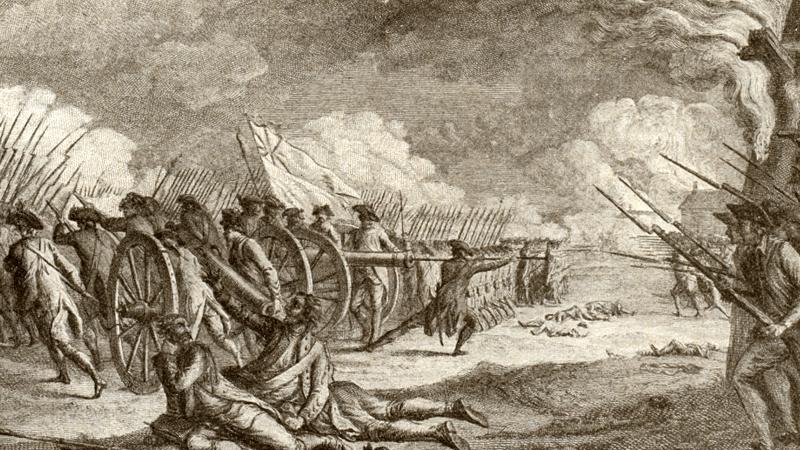
(Seal of Chautauqua County displayed at the New York World's Fair 1939-1940.)
By Norman Carlson, Chautauqua County Historian
This week in Chautauqua County’s rich history spans significant milestones in community development, transportation, and even moments of natural intrigue. Here are some key events from September 22 to September 28.
September 22
- 1883: Construction began on the Gustavus-Adolphus Children's Home in Jamestown, also known as the Lutheran Home. This institution was an important refuge for children in need, providing care and support throughout its operation.
- 1906: The Jamestown Chamber of Commerce was officially organized, marking the beginning of concerted efforts to foster business growth and community development in the city.
- 1963: The steamboat City of Jamestown made its final voyage. It was the last of the old steamboats, symbolizing the end of an era in regional transportation on Chautauqua Lake.
September 23
- 1759: Charles Lee and 14 men stopped at what would later become the site of Dunkirk, marking an early historical record of the region.
- 1983: The Chautauqua County Chapter of the Sons of the American Revolution was officially installed, connecting local residents to the legacy of the nation's founding and their Revolutionary War ancestors.
September 24
- 1872: Walter Sessions delivered a speech in Busti advocating for the election of Ulysses S. Grant as president and Henry Wilson as vice president.
- 1875: The Pomona Grange, representing Chautauqua County, was organized, supporting local farmers and promoting agricultural cooperation.
- 1906: Regular trolley service began between Mayville and Westfield, enhancing public transportation and connectivity in the county.
- 1919: Jamestown opened its first infantile paralysis (polio) clinic, the first of its kind in southwestern New York, providing critical care during the polio epidemic.
- 1944: Nancy Roosevelt, granddaughter of President Theodore Roosevelt, married William E. Jackson, son of Supreme Court Justice Robert H. Jackson, in a notable family wedding.
- 1950: In a curious event, mid-afternoon was plunged into darkness across Chautauqua County and much of the northeast, caused by high-altitude smoke from fires in Canada.
- 1977: A giant fiberglass statue of an Indian was removed from Tom Conti’s beer distributor in Brooklyn Square, marking the end of a local landmark.
September 25
- 1813: The east end of Baker Street Extension in West Ellicott was surveyed, an important step in the area’s development.
- 1845: The Congregational Church in Sinclairville was dedicated, becoming a central place of worship and community for the town.
- 1861: In one of Jamestown’s earliest baseball games, the local team lost to Titusville at "A&E Junction," when baseball was still in its infancy.
- 1874: The steamboat P.J. Hannour burned at Jamestown, a significant loss during the height of steamboat transportation.
- 1901: The Busti Grange was organized, adding another chapter to the county’s strong agricultural heritage.
- 1909: The Gurney Ball Bearing Company was established in Jamestown, contributing to the region's industrial growth.
- 1920: In a tragic and gruesome event, Jamestown cab driver George Klinger was murdered in Busti, his body hidden in a straw stack and set on fire.
- 1955: Work began on the Jamestown Ski Slope in Frewsburg, a new recreational opportunity for winter sports enthusiasts in the area.
- 1987: The first I Love New York balloon rally was held in Mayville, becoming a beloved tradition that continues to delight locals and visitors alike.
- 1998: An earthquake with an epicenter in Sharon, Pennsylvania, struck at 3:35 PM, and was felt throughout Chautauqua County, reminding residents of the occasional power of nature.
September 26
- 1882: Jumbo, the famous elephant, visited Jamestown, leaving a lasting impression on residents who got to see the famed circus animal up close.
- 1908: The cornerstone was laid for a previous Y.M.C.A. building in Jamestown, establishing a key community facility.
- 1944: The Jamestown Area Safety Council was formed, promoting public safety and accident prevention in the area.
- 1949: Warner Sallman, the artist behind the well-known Head of Christ painting, visited Jamestown, drawing attention for his iconic religious artwork.
September 27
- 1817: The first Masonic meeting in southern Chautauqua County took place in Jamestown, establishing a Masonic presence in the region.
- 1853: The first day of the Chautauqua County Fair was held in Stockton, showcasing the county's agricultural achievements and community spirit.
- 1885: Natural gas was piped to Jamestown for the first time, a major advancement in the city's infrastructure and energy use.
- 1888: Electric lights were first used in Dunkirk, bringing the modern marvel of electricity to the city.
- 1898: Twelve skulls and other bones were unearthed on the lakefront at Chautauqua Institution, providing a glimpse into the area’s ancient past.
- 1960: The cornerstone for the Jamestown Federal Building and Post Office, now the Lynn Building, was laid at 3 PM, marking the start of construction on an important civic structure.
- 1969: The Hotel Jamestown was dedicated as elderly housing, making it the first hotel-to-housing conversion of its kind in the nation.
- 1971: Demolition began on the Institute Street Bridge in Jamestown, kicking off the urban renewal project that reshaped parts of the city.
September 28
- 1836: A public debate was held in Jamestown at 6:30 PM on the topic of whether abolitionist doctrines would prove injurious to the country, reflecting the heated discussions of the time.
- 1895: The cornerstone was laid for Jamestown’s first City Hall, a building that stood until its demolition in 1971.
- 1911: The first airplane flight over Chautauqua County took place, piloted by Calbraith Perry Rodgers, marking a major milestone in aviation history.
- 1914: The Fluvanna Library Association was formed, establishing a community hub for literature and learning.
- 1967: Jamestown native Walter Washington took office as the first mayor of the District of Columbia, making history in the nation's capital.
- 1971: The sculpture "Portage" was placed in Tracy Plaza, Jamestown, becoming a significant piece of public art.
- 1975: The first Busti Apple Festival was held, celebrating the region's agricultural heritage, a tradition that continues today.
- 1984: Wallace Barlow of Sugar Grove, Pa., retired as the last door-to-door milk delivery dairyman in the area, marking the end of a bygone era.
- 1994: The Victoria Hotel, affectionately known as “The Bucket,” in Lakewood, was demolished, bringing down a local landmark.
- 2002: Tim Bailey of Jamestown displayed a massive 1,245-pound "pumpkin" in Clarence, NY, an Atlantic Giant squash that became a point of local pride.
Chautauqua County's history is filled with events that shaped its landscape, industries, and communities. From early transportation developments to local celebrations, each of these moments provides a window into the past.







